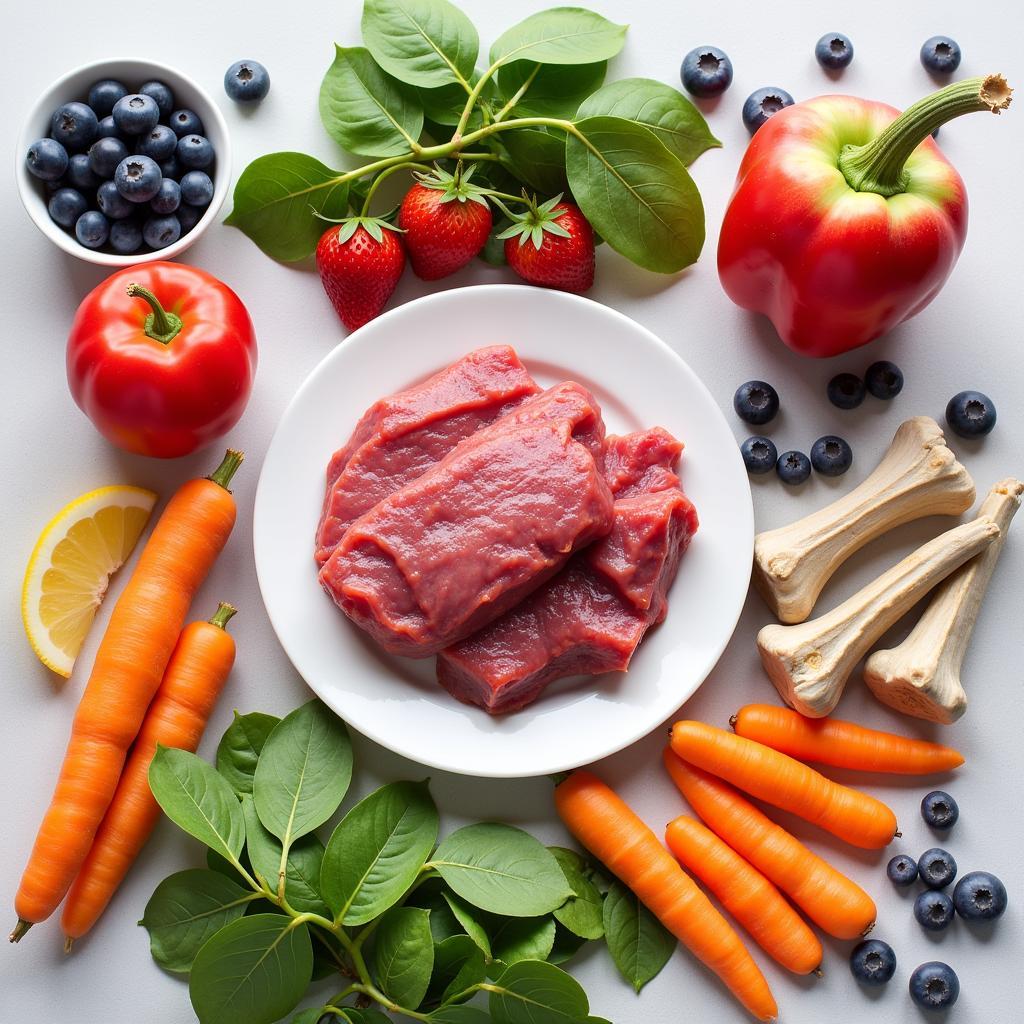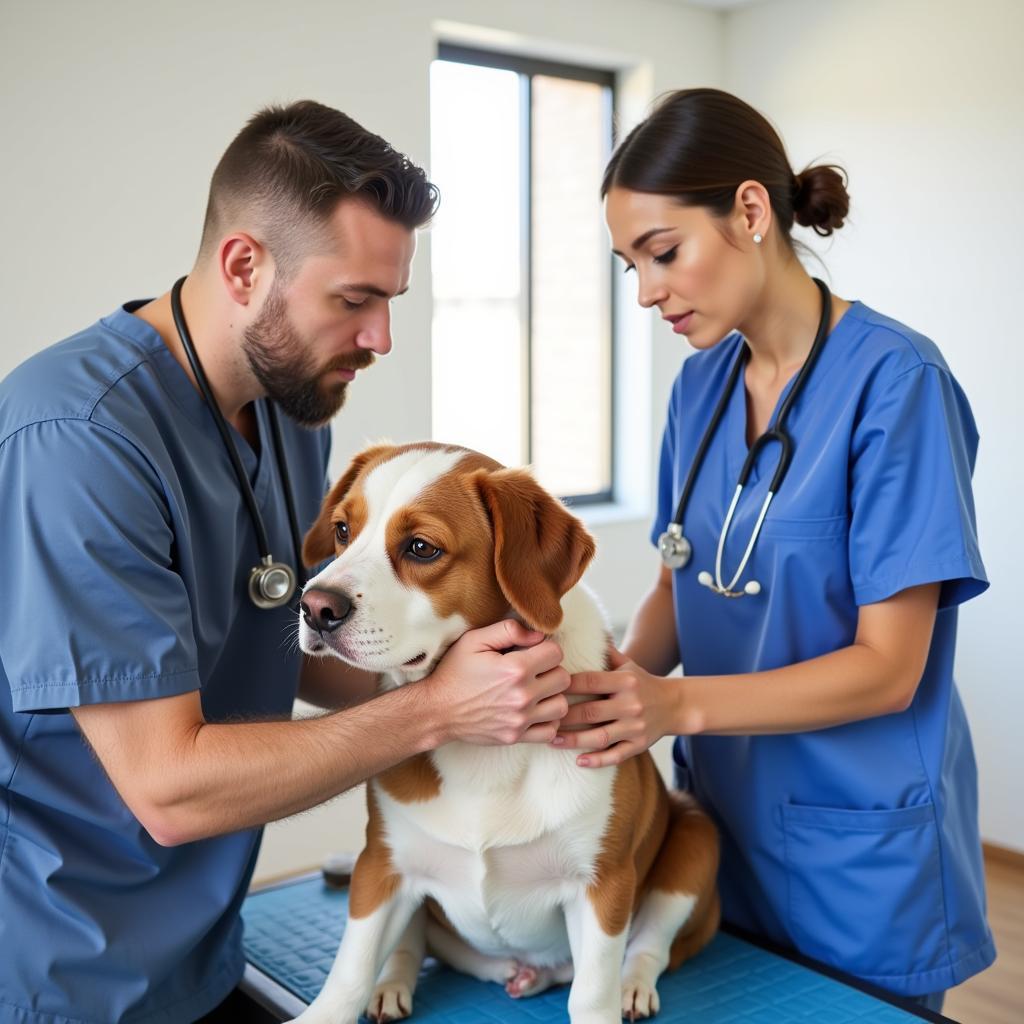Thinking about making the switch to a raw food diet for your furry friend? You’re not alone! More and more pet parents are exploring the potential benefits of raw feeding for their dogs. This comprehensive guide will walk you through everything you need to know about switching your dog to a raw food diet, from understanding the basics to ensuring a smooth transition.
What is a Raw Food Diet for Dogs?
A raw food diet for dogs, often called “BARF” (Biologically Appropriate Raw Food), typically consists of uncooked muscle meat, bones, organs, fruits, and vegetables. It aims to mimic a dog’s ancestral diet, providing nutrients in their most natural form.
Benefits of a Raw Food Diet for Dogs
Advocates of raw feeding often cite several potential benefits:
- Improved Digestion: Raw food proponents believe that dogs digest raw food more easily than processed kibble.
- Shinier Coat & Healthier Skin: Many raw feeders report seeing a noticeable improvement in their dog’s coat and skin condition.
- Increased Energy Levels: Some owners observe a boost in their dog’s energy levels after switching to raw.
- Smaller Stool Volume: Due to higher digestibility, raw-fed dogs may produce less waste.
Potential Risks and Considerations
While a raw food diet can offer benefits, it’s crucial to be aware of potential risks:
- Nutritional Imbalances: Formulating a balanced raw diet requires careful planning.
- Bacterial Contamination: Handling raw meat always carries a risk of bacterial contamination.
- Choking Hazards: Bones, especially cooked bones, can pose a choking hazard.
- Cost: Raw feeding can be more expensive than traditional kibble.
 Raw Dog Food Ingredients Spread
Raw Dog Food Ingredients Spread
Is a Raw Food Diet Right for Your Dog?
The decision to transition your dog to a raw diet should be made in consultation with your veterinarian. They can assess your dog’s individual needs, health status, and lifestyle to determine if raw feeding is appropriate.
How to Switch Your Dog to a Raw Food Diet
Ready to embark on the raw feeding journey? Here’s a step-by-step guide:
- Consult Your Vet: Discuss your plans with your vet to address any concerns and get personalized advice.
- Choose a Transition Method: You can transition gradually or with a cold turkey approach. Gradual transitions involve slowly introducing raw food alongside your dog’s current food over a week or two.
- Start with a Simple Protein: Begin with a single source of protein, such as chicken or beef, to monitor for any sensitivities.
- Introduce New Foods Gradually: Introduce new ingredients one at a time, allowing a few days between each addition.
- Monitor Your Dog Closely: Observe your dog for any changes in appetite, digestion, or overall health.
Diamond red bag dog food : A Great Alternative
While raw feeding can be rewarding, it’s not for everyone. If you’re looking for a convenient and nutritionally balanced option, consider a high-quality commercial dog food like the Diamond red bag.
Common Questions About Switching to Raw
How Much Raw Food Should I Feed My Dog?
The amount of raw food your dog needs varies depending on factors like age, breed, activity level, and metabolism. A good starting point is to feed 2-3% of your dog’s ideal body weight per day.
What About Bones?
Raw, meaty bones are an essential part of a balanced raw diet, providing calcium and other nutrients. However, always supervise your dog while they are eating bones and avoid cooked bones altogether.
Can Puppies Eat a Raw Diet?
Puppies can thrive on a raw diet, but it’s crucial to ensure their nutritional needs are met during this critical growth stage. Consult with your veterinarian for guidance on feeding a raw diet to puppies.
 Veterinarian Checkup for Raw-Fed Dog
Veterinarian Checkup for Raw-Fed Dog
Conclusion
Switching your dog to a raw food diet can be a significant decision. By understanding the benefits, risks, and steps involved, you can make an informed choice that aligns with your dog’s individual needs. Always consult with your veterinarian throughout the process to ensure your furry friend receives the best possible care on their raw feeding journey. Remember, you can also opt for great alternatives like Taiga dog food if raw feeding doesn’t fit your lifestyle. For more insightful articles on dog nutrition and care, explore our dog food project.
Need personalized advice or support? Our dedicated team at Mina Cones Food is here to assist you. Contact us at 02437655121, email us at minacones@gmail.com, or visit us at 3PGH+8R9, ĐT70A, thôn Trung, Bắc Từ Liêm, Hà Nội, Việt Nam. We’re available 24/7 to help you navigate the world of pet nutrition.